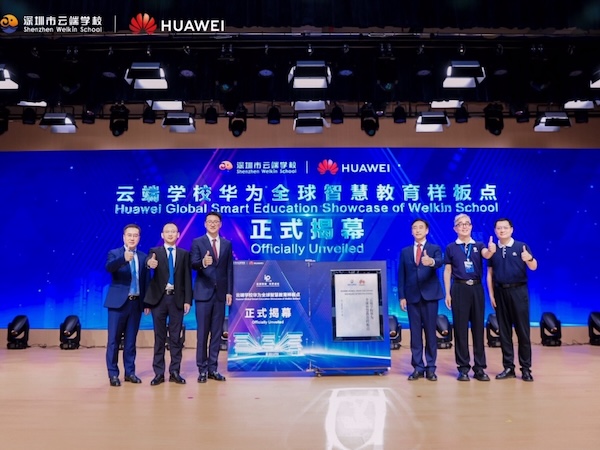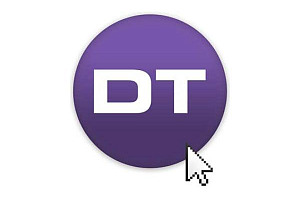There is a shortage of high-quality teaching in schools across the globe, but a new, innovative model is equipping teachers with the tools they need to prepare the next generation of minds.
Huawei is working with education institutions to tackle inequality in the sector through the use of smart education solutions. These were recently unveiled at the company’s Global Smart Education Showcase, where the Chinese technology giant demonstrated its pilot project with Shenzhen Welkin School to over 100 education leaders from around the world.
Huawei and Shenzhen Welkin School have co-developed a centralised teaching model that allows schools to share teaching resources and instructional material. The ambition is simple but far-reaching: equal access to high-quality educational resources and enhance overall quality of education.
An uneven educational landscape
The need for such initiatives is urgent. According to UNESCO, there is a global shortage of qualified teachers and high-quality education. A 2024 report from the organisation highlights an “urgent need” for 44 million more primary and secondary teachers worldwide by 2030. Sub-Saharan Africa faces the steepest challenge, with a requirement for 15 million teachers in the next five years alone.
It is clear the shortage of teachers will reach a critical point as population numbers swell globally. Huawei and Shenzhen Welkin School’s cloud-based teaching model is aimed at tackling this, as well as other shortfalls such as uneven distribution of high quality educaitonal resources and lack of interactivity in a traditional classroom.
This is the context in which Huawei and Shenzhen Welkin School’s partnership becomes significant. Their joint project aims to demonstrate how digital technology can mitigate educational inequalities in Shenzhen and potentially act as a blueprint for other regions.
Case study: Shenzhen Welkin School
Shenzhen Welkin School operates 26 schools across 11 districts, positioning it as a flagship institution for national pilot programmes in basic education reform. It is also a national-level hub for smart teaching innovation and a demonstration zone for China’s broader smart education ambitions.
Welkin was the first institution to adopt Huawei's smart education solution. The set-up includes interactive whiteboards, cross-district communication and high-speed Wi-Fi 7, enabling the school to implement its much-praised 1+N teaching model.
The 1+N model
Principal Gong Weidong describes the model as “One City, Two Companions, Three Collaborative Activities,” representing a fundamental rethink of how education is organised and delivered.
• One City: a unified strategy across Shenzhen to share resources and standardise quality.
• Two Companions:
o Inter-school companions – students and teachers can collaborate across institutions, breaking down barriers between schools.
o Intelligent learning companions – AI-powered and digital tools that support students’ day-to-day learning.
• Three Collaborative Activities:
o Collaborative lesson preparation among teachers.
o Joint pedagogical research.
o Shared teaching across campuses.
In practice, the model means students are grouped across 80 classrooms that connect live to a central “headquarters” where lead teachers deliver lessons via a 4K video feed. Partner schools receive these lessons in real time, with assistant teachers on site to support students, answer questions, and provide the human touch where needed.
“This approach gives every student access to top-tier teaching,” Gong explained, “while also allowing our staff to make breakthroughs in teaching and research.” Assistant teachers also gain invaluable classroom experience, accelerating their professional development.
According to Gong, the model “enhances the teaching skills of assistant teachers while delivering finely-designed classes for every student in Shenzhen Welkin School. These innovations ensure the seamless flow and integration of high-quality resources, turning the vision of educational equality and development into reality. Recognition has already come from both the Chinese government and the wider global education community.”
Global recognition
The project’s success has not gone unnoticed. Shenzhen Welkin School was awarded the UNESCO Global Smart Education Innovation Award in 2024, affirming the value of its practices on the international stage.
At Huawei Connect 2025 in Shanghai, the vendor showcased how its Smart Education Campus Solution is transforming education across four dimensions: robust campus networks that deliver high-speed connectivity to every classrooms; intelligent collaboration tools for teachers and students to co-create and interact; Intelligent network operations and maintenance (O&M); and wide backbone networks that make cross-district lessons sharing and joint teaching possible.
Technology backbone
Welkin’s headquarters is powered by the Huawei Education Campus Network which links it to partner schools through the Huawei Xinghe AI education metro network, providing 4K definition feeds between classrooms. Boundaries are also shifting for teachers. Huawei’s cloud-based, low-latency and high-bandwidth network - enables teachers to share teaching resources, co-develop lessons, conduct joint, as well as remotely teach students.
Such powerful infrastructure ensures “smooth and stable” live-streamed classes for thousands of students, and collaborative work between teachers, simultaneously.
Lead teachers deliver lessons using the Huawei IdeaHub - a 4K blue light-blocking smart screen - instead of the traditional whiteboard or chalkboard. Key points can be marked in real time while assistant teachers in satellite schools receive the updated content instantly.
Students are also active participants. They can join online debates, collaborate on virtual geometry models, and share work interactively – breaking down the traditional boundaries of the classroom.
To maintain this level of service, Huawei has deployed its iMaster NCE network management system, which visualises campus network status, provides real-time fault detection, and enables automatic optimisation. Problems that might otherwise disrupt a class can be resolved in minutes, often by one person who can manage a campus of 1,000 people.
“With a strong network foundation, intelligent collaboration tools, and intelligent O&M, Huawei lays a solid technical foundation for the cloud model to thrive,” Gong said.
The showcase at Huawei Connect signals a transition for smart education not simply a products showcase, but about proving technology that can tangibly improve access, equity, and teaching quality.
Comparing with European initiatives
While China is scaling up smart education at pace through projects like Shenzhen Welkin School, similar efforts are under way in Europe – though often on a smaller scale and with different priorities.
One example is Italy’s Piccole Scuole (“Small Schools”) initiative, coordinated by the Indire research institute. Like Welkin’s 1+N model, it seeks to overcome inequalities in access to quality teaching, particularly in remote and rural areas. Small schools are digitally connected to share teachers, co-develop lessons, and provide students with access to specialist subjects they would otherwise miss. However, the focus in Italy is less on high-capacity infrastructure and more on fostering community participation and preserving local culture.
The European Commission’s broader Digital Education Action Plan emphasises inclusion and teacher digital skills, but it does not yet match the level of technical centralisation seen in Shenzhen. Instead, the EU prioritises interoperability and safeguarding student data across multiple vendors.
In comparison, Huawei and Shenzhen Welkin School’s model is notable for placing network infrastructure at the centre of education reform. The metropolitan area network connects districts across the city with low-latency optical fibre, while the campus network beams 10Gbps connectivity straight into classrooms. This delivers use cases and tools such as 4K remote teaching, cross campus collaboration and instant content sharing. Such a scale has yet to be seen in other parts of the globe.
Challenges to overcome
But there are challenges for this model. A particular hurdle is the overreliance on a stable connectivity to ensure people are able to learn uninterrupted in case of a connection outage, be it from network issues or outlandish weather. There is also the digital divide between urban and rural locations, with people living in more remote locations that lack the necessary and expensive infrastructure to gain meaningful educations, particularly compared to the recent hyper development of Shenzhen from a mere fishing village in the 1980s to a booming metropolis. Teachers will also have to be trained to become more technologically literate to fully augment the new tools at their disposal to deliver the full potential of their teachings.
The challenges have been acknowledged and are currently being tackled. Welkin runs a teacher exchange programme to train those located in rural areas to provide that human touch which is still valued – as well as remote training.
On the network issue, Huawei maintains a high standard in terms of network resilience and its project with Welkin is fundamentally network focused, hence any form of downtime is rare and easily fixed.
The implications stretch beyond China. If scalable, models like Welkin’s could inspire other regions struggling with teacher shortages and resource inequalities – from rural schools in Asia to overburdened classrooms in Sub-Saharan Africa - and potentially make a lasting systemic difference.
---
UNESCO. (2024). Global report on teachers: What you need to know. [Online]. unesco.org. Last Updated: 20 February 2024. Available at: https://www.unesco.org/en/articles/global-report-teachers-what-you-need-know [Accessed 29 October 2025].















